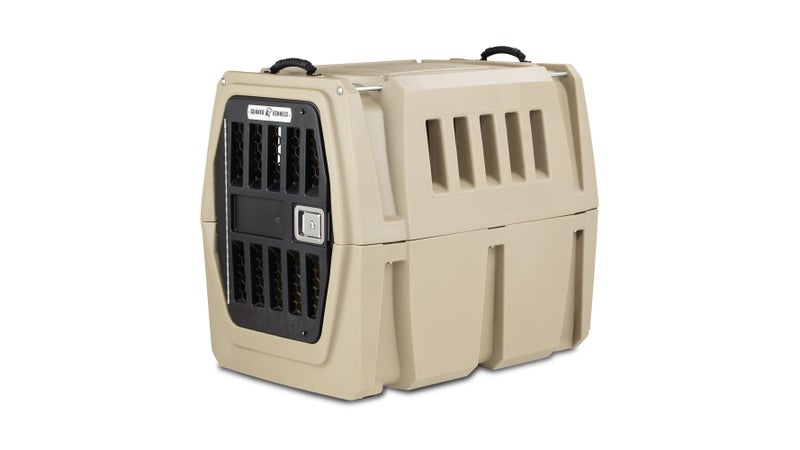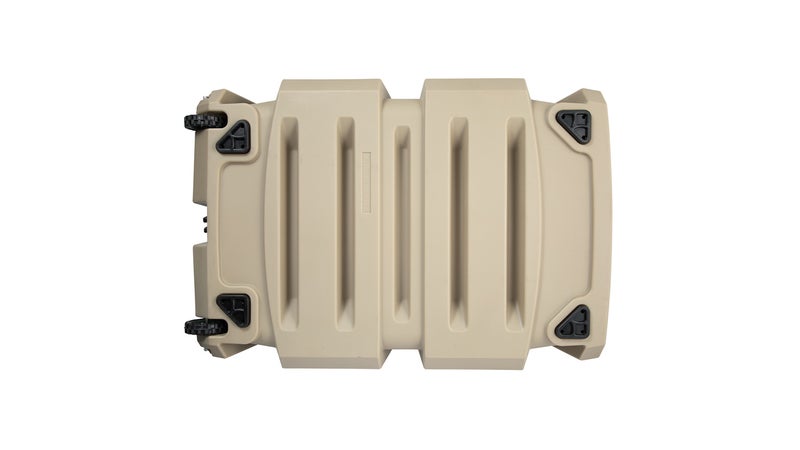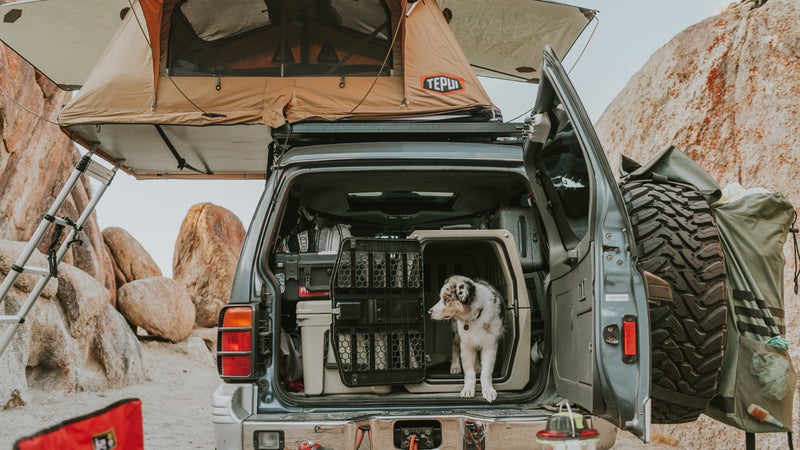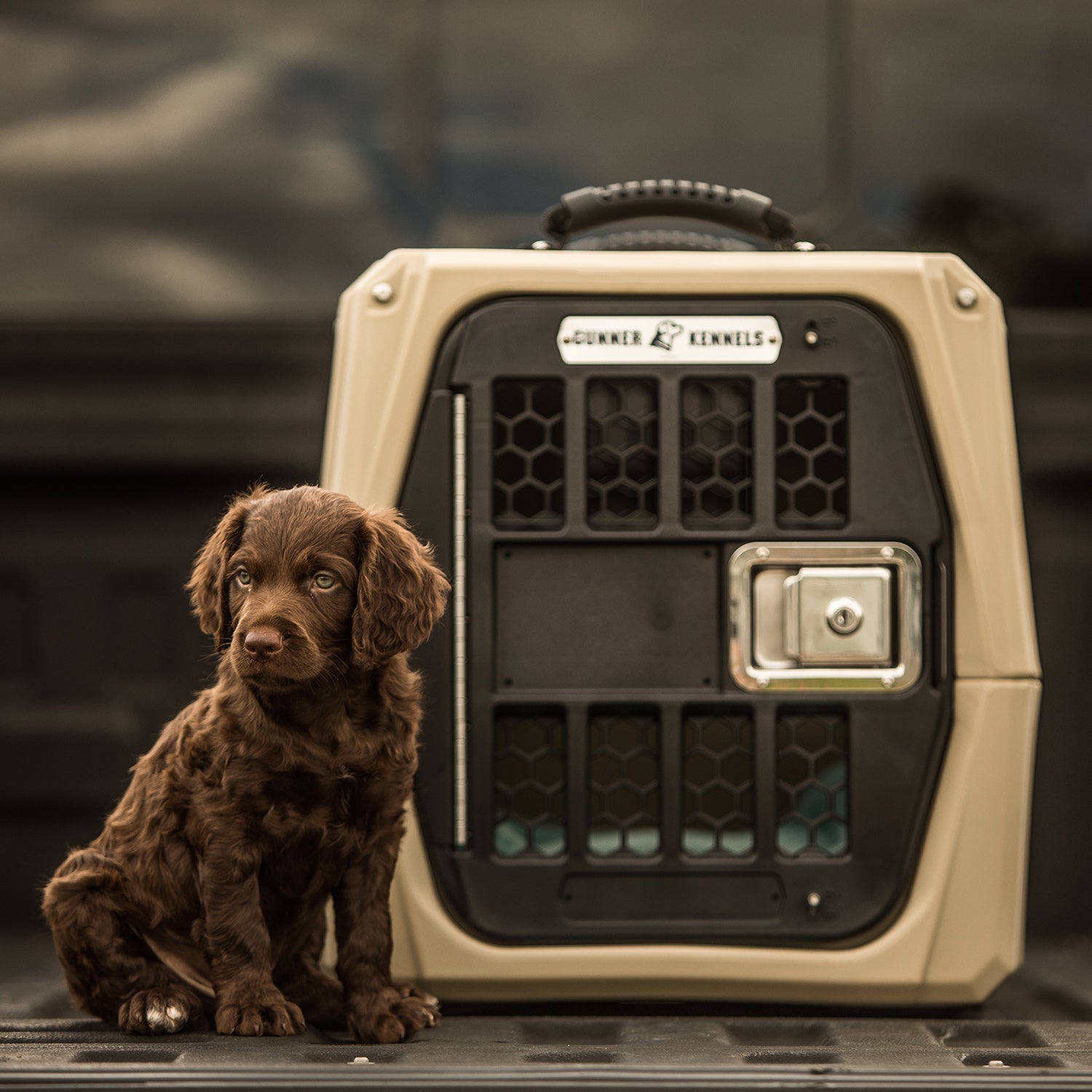In a size large, costs $600. Empty, it weighs 72 pounds. Both numbers are approximately 10 times those of the single-wall plastic crates that you’ll find at a pet store. Excessive? I guess that depends on how seriously you take the safety of your dogs.
A decade ago, every single one of us thought that charging $60 for a cooler was pretty excessive. These days, most of us can’t remember how we kept our food cold before Yeti came along. That brand took a product everyone considered perfectly adequate, then��re-imagined it. Sure, its coolers are expensive, enormous, and heavy, but by keeping ice frozen far longer than anyone had previously thought possible, Yeti has enabled its customers to better enjoy outdoor activities. I think Gunner Kennels is doing the same thing for dog owners.
“I basically just built my dog the kennel I wanted,” says Addison Edmonds, who founded the company, which is named after his��dog. Edmonds is a passionate waterfowl hunter, so regularly transports Gunner between home and field in his truck. And the typical plastic travel crates we’re all familiar with just didn’t hold up.

Edmonds’s research eventually led him to a double-wall, rotomolded design that’s very similar to that of a Yeti cooler. Just here, there are large ventilation slots and a heavy duty metal-framed door. This type of construction��lends the crate massive strength in three dimensions, at a weight that remains manageable for a single person to load into or out of the bed of a pickup. In its testing,��Gunner Kennels has found that its crates can withstand a crushing force in excess of 4,000 pounds. Traditional plastic crates can barely withstand being��transported, let alone the forces created in a car crash.��The G1 is the only crate to earn from the Center for Pet Safety.
Keeping dogs safe in cars is a complicated, nuanced problem that doesn’t have a perfect solution. As I explored in-depth��last year, a harness that keeps your dog in the rear seat and connects to the seat belts is the best solution for managing the forces a dog is exposed to in a crash. But those harnesses may not be a practical solution for owners of large dogs or people who want to carry dogs in the back of a truck or van. A crate provides containment, preventing your dog from flying around��in a crash, as well as protecting the animal��from debris.��Importantly, crates also keep pets from falling out of the vehicle, something which the Humane Society says .

Of course, to achieve those safety benefits, a crate needs to be really damn tough. At just 35 miles per hour, a 60-pound dog becomes a 2,700-pound projectile. Additionally, exposed in the bed of a pickup, a dog can be subject to the forces caused by a vehicle rollover. That resistance to 4,000 pounds of crushing force achieved by the Gunner G1 doesn’t sound like overkill now, huh?
That’s why I recently ordered a��large G1. My dog, Wiley, has always been a little anxious on car rides, but following a long-distance move last summer, that anxiety started to become unbearable for us humans. He now cries and whines while hopping around the car uncontrollably, and won’t settle down, even on long trips. I needed to find a way to contain him, and with a new pickup truck on the way, moving him from the cabin to the bed where us humans wouldn’t be tormented by his crying sounded really appealing. Of course, I’d only do that if I could guarantee the safety and comfort of my best friend.
The top and bottom halves of the G1 arrived in two separate boxes that were each so big that they can had to be squeezed through a standard-width home door, with no room to spare. Initially, I was a little unimpressed with the featureless beige halves, but then I set about assembling them. The provided bolts are of perceptibly top-end quality, and arrive with red threadlock already applied. Put the top half on the bottom and seven of those bolts screw into nuts molded into the polyethelene. The metal-framed door bolts into the opening, with a��hinge that runs the full height of the door on one side, blocking access to those bolts. I groaned with anticipation of the contortions that were going to be necessary to install the bolts that run behind it, before I noticed the access holes drilled into the frame that made the job easy. The process of putting the crate together felt like working on a nice car; it was��immensely reassuring.

Examine the assembled crate closely and what looks like a beige plastic box from afar��becomes something that’s full of clever solutions and loads of smart details. Rubber feet on the bottom prevent the G1 from sliding around in a truck bed, as well as provide an air gap below the crate, offering some insulation from the ground or pickup bed. A recessed channel runs around the interior perimeter of the crate floor, funneling��liquids to a drain plug at the rear. That means to clean it, you just spray it out with a hose and it will drain automatically and quickly. If your dog pees inside, that too will just flow out. In addition to the full-length hinge, the door is secured by a locking latch on the opposite side and supplementary latches top and bottom. Those four points of contact maximize the likelihood that the door will remain closed if the crate is deformed in a violent crash. The carry handles come off a kayak. The rubber wheels are mounted on heavy duty (and replaceable!) steel axles. Perhaps most importantly, the steel tie-down points are molded into the polyethylene with enough strength that they match the 2,500-pound load rating of the provided tie-down straps.
There’s also —everything from a battery-powered cooling fan to sleeping pads that exactly contour the crate’s interior—that add to the G1’s practicality.
I remarked to Edmonds that loading Wiley into the G1 doesn’t feel like I’m putting him in a doggy jail cell. “When I load Gunner into his crate, it’s something I feel good about,” he says.
The double-wall rotomolding also provides dogs with some insulation from the heat or cold. The company has noted that the interior of its crates can, in some circumstances, remain 15 degrees cooler than ambient temperatures on hot days. While this feature will provide some additional comfort for the dog, Edmonds is hesitant to pitch the insulation as a safety feature, for fear that it could get in the way of an owner adequately protecting their animal from extreme conditions. At the very least, the dead air space in the shell, plus the non-conductive nature of polyethylene, means the crate won’t feel hot or cold to your dog’s touch.

It should also be noted that there are some best practices required for dog owners to get the most out of their kennels. While the G1’s four tie-down points and straps can each resist 2,500 pounds of force, the points you strap it to in a car or truck may not be nearly as strong. The tie-down hooks in the back of most passenger vehicles, for instance, are only rated to 100 pounds. Edmonds is also quick to stress how important it is to secure��the door’s two supplementary latches, if that door is to remain closed during a crash. You also need to be careful about appropriately sizing your crate to the dog it will carry. The less extra space there is inside, the less a dog will bounce around in a crash.
All that said, the G1 remains a uniquely safe product. Edmonds says that they’ve seen “probably a dozen” severe accidents while dogs were traveling in customer’s crates, but zero reported injuries. Visit the page, and there are��some big crashes recounted;��everything from a rollover to a pickup that skidded off the road and struck a telephone pole with its bed, where the dog was traveling. “We have not even heard of a dog that has broken a leg in the kennel,” says Edmonds.
With the G1, that safety comes in a package that should stand up to years of daily use, and which you can use for air travel, or static crating in a home or campsite. Is it worth $600?If you travel with your dog, I think it’s the best $600 you’ll ever spend.


